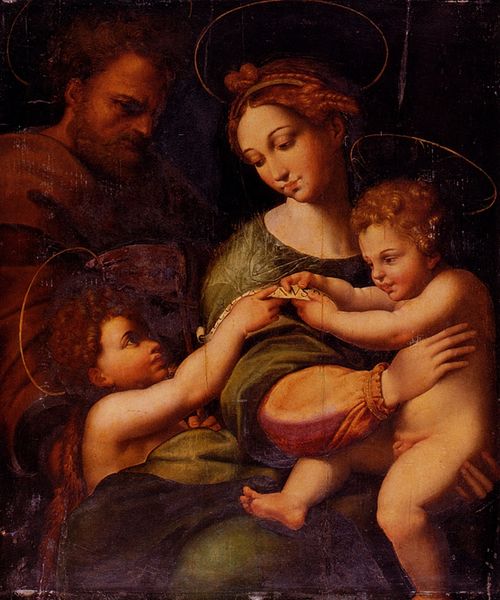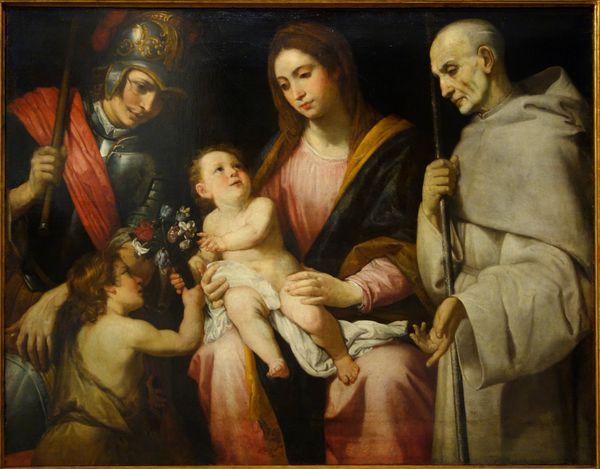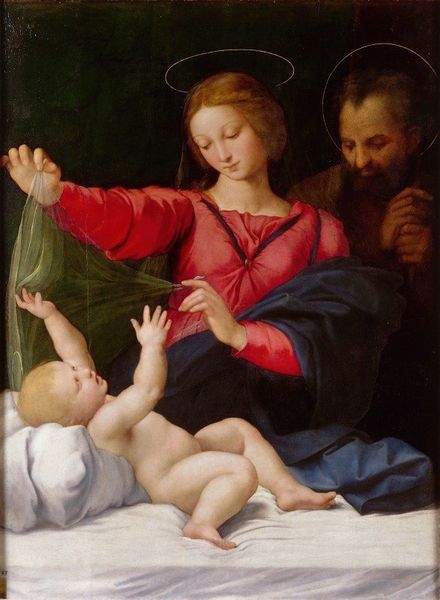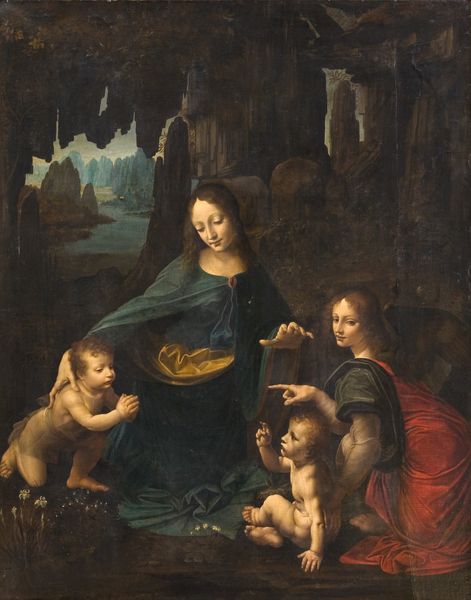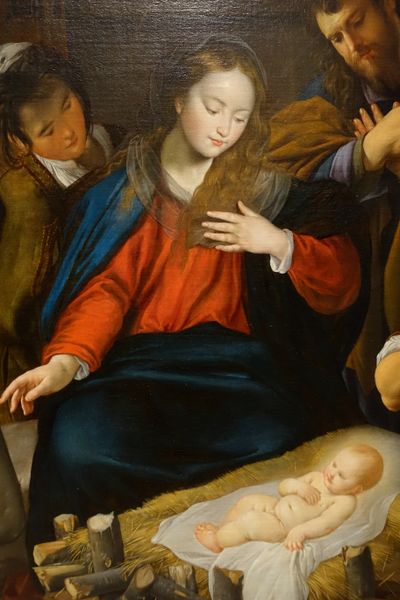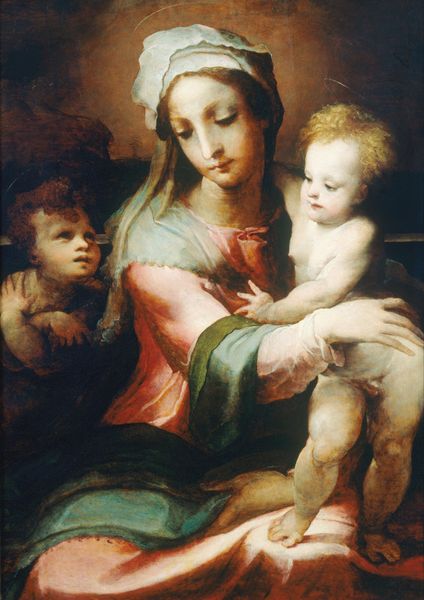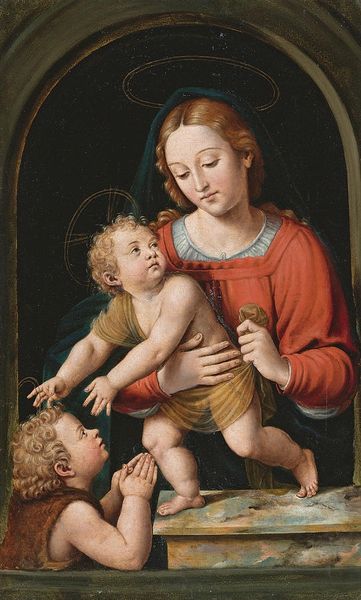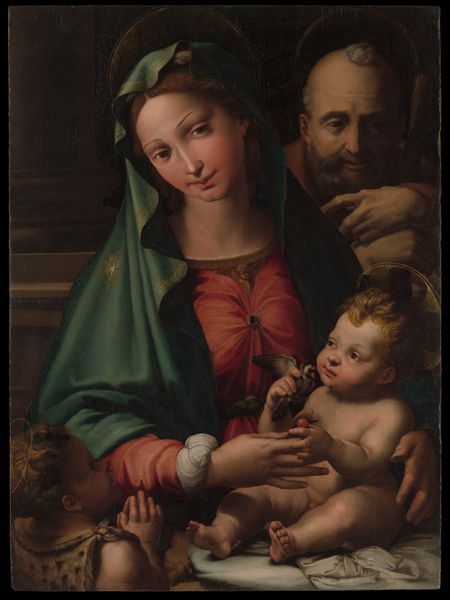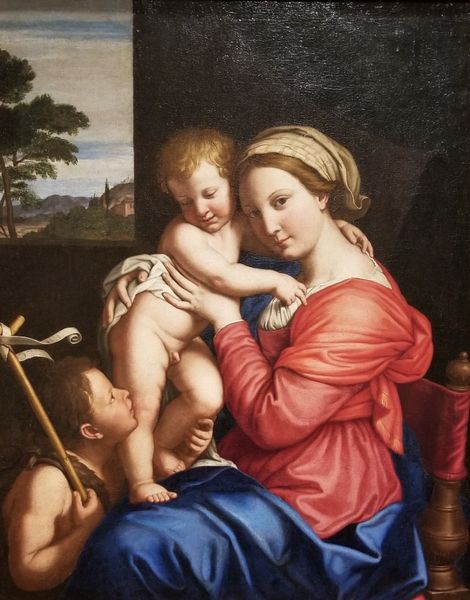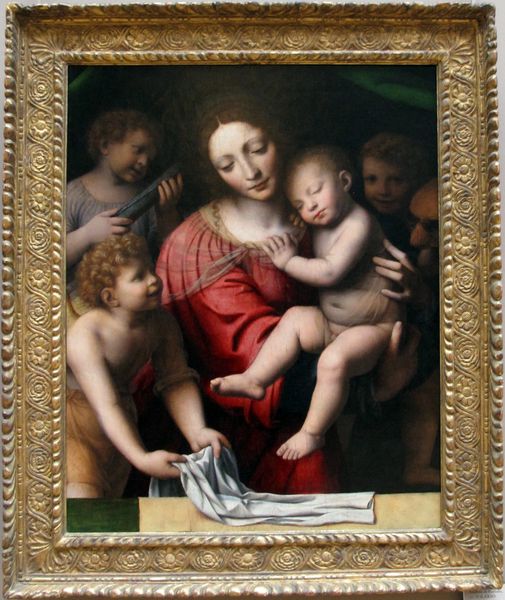
Madonna and Child with the Infant Saint John the Baptist and Saint Francis c. 16th century
0:00
0:00
painting, oil-paint
#
portrait
#
character portrait
#
painting
#
oil-paint
#
figuration
#
oil painting
#
history-painting
#
italian-renaissance
Dimensions: 33 3/4 x 40 x 2 3/4 in. (85.73 x 101.6 x 6.99 cm) (outer frame)
Copyright: Public Domain
Curator: Just look at the soft glow that emanates from this painting. It's "Madonna and Child with the Infant Saint John the Baptist and Saint Francis," an oil on panel attributed to Vincenzo Rustici, dating from around the 16th century. It hangs here at the Minneapolis Institute of Art. Editor: Mmm, my first thought? Tender. Almost like peeking into a very private, very quiet moment. There's a hushed atmosphere in the way they are arranged and colored, the soft flesh tones...it is so, so moving. Curator: Rustici masterfully employs the pyramidal composition so popular during the Italian Renaissance. Note how Mary forms the apex, her gaze downward, unifying the figures of Christ, John the Baptist, and Saint Francis into one visual plane, like an alterpiece on the go. This work exemplifies how religious narratives were subtly imbued with familial warmth. Editor: It feels like they're sharing a secret, doesn't it? John offering Christ a symbolic cross while, isn't that Joseph peeking from the other side, all witnessing something sacred and profoundly intimate. Makes you think of your own childhood... Or maybe the one you wish you had, where faith wasn't a heavy doctrine but rather a cozy conversation. Curator: Absolutely, it moves beyond rote religiosity to connect with the public sentiment towards mothering. The composition guides your eyes but, but the artist’s decisions when staging the image for maximum engagement with everyday viewers is why the work speaks to modern-day audiences. What details hold your eye? Editor: Those little chubby fingers! Look how gently the Madonna supports them and her own are surprisingly large in comparison, I would not have placed it if you have not pointed it out to me, so I want to keep looking longer now. She really cradles his preciousness. It brings forth not an untouchable goddess, but rather very humane emotions, fear perhaps of keeping the most delicate human body alive. Curator: These portrayals offered accessible imagery. Religious artworks also functioned as domestic furnishings and objects of cultural and civic pride for wealthy merchants who aimed at curating cultural values. In their collecting frenzy, sometimes, even they forgot what moved them at the beginning! Editor: This work feels a little rebellious to me, in a beautiful way. Almost subverting expectations of grandiose religious art for something profoundly personal. Maybe Rustici was aiming at a truly private encounter within something otherwise meant to perform and teach values. Thank you for pointing this piece!
Comments
No comments
Be the first to comment and join the conversation on the ultimate creative platform.

